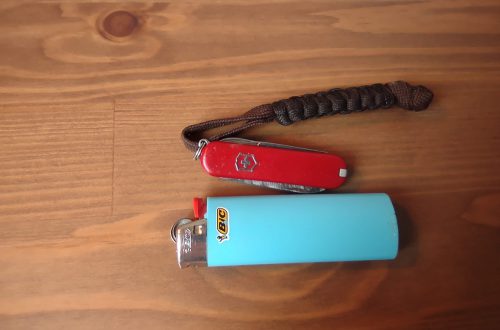
Charging your phone while hiking
In this day and age, your phone goes with you everywhere. Looking up maps, taking photos or video’s and listening to music. Keeping them charged is the challenge.
But is it still a challenge? Not really. With the latest technology that keeps getting better and better. You do not really have to worry about it so much. And the battery life of your mobile phone will surprise you when hiking. Not constantly checking email or watching the latest news will really save your battery.
Lets go over the ways to charge your electronics and phone while on trail.
Conserving battery power
This is of course not a solution to the problem but a precaution, when saving battery power on your phone you have to charge it less often. In day-to-day life, your phone will last plus-minus a day.
Constantly checking email, connecting to WIFI networks and cellular data. Screwing around on social media and watching your favorite cat video. If you want to conserve your battery power then none of that is helping.
Turn off your phone
Turning off your phone is only necessary when not using your phone for an extended period of time. Rebooting costs more power than on standby on most phones. So do not do this every time you do not use your phone for a few hours.
Turn off data and constantly roaming for WIFI
Turning off your data is easy to do on Android, just swipe down from the menu and tap the signal for it. WIFI is the same but with an extra step. You have to turn off the constant roaming for available WIFI networks.
This is in WIFI -> Settings -> turn off roaming with location.
Brightness and use
This is quite obvious but use your phone more and waste more power. It’s not rocket science. Steps you can take to lessen the power you use is to make as many apps that you use often in a dark or black theme. And turning down the brightness from your phone.
I suggest also turning off vibrations and noisy alerts on your phone. This also helps a little bit.
Keeping it at body heat
Always keep your phone close to your body to warm it up, and the same thing goes for the battery pack. When in colder temperatures this can result in power loss.
Solar charging your devices
Solar charging is the most exciting way for me to charge my devices, but the reality is that it can be quite unreliable for out on trail. And you do need quite a bit of surface area from your panels to stand a chance of charging your phone.
I have seen a couple of people have quite decent success with this system. They always have multiple panels and therefore a larger surface area than a simple little panel. It also very much depends on what kind of area you’re going to go to. While out in thick forest cover you can forget about it.
So is solar charging an option? Yes. But with some skepticism. Most hikers abandon the solar panels after the first couple of weeks.
Battery pack for charging your devices – The best way
Carrying a battery pack is my preferred way of carrying around power. It’s a no-fuss way and can be used everywhere you like. My ultimate setup would be a solar panel system that is lightweight and can charge my 20.000 battery pack in record time. But I’m afraid we are not there yet.
You can however charge your battery pack overnight in campsites your stay in, hostels, or charging points in restaurants. If you ask nicely and buy a coffee you can get a lot done. Even if you normally have to pay for electricity at a campsite, in my experience if you ask nicely and bring the powerbank they will not mind.

I have carried my Anker 20.000 amp battery pack now for longer than a year and really liked it. The only thing I hate is that it still has the micro USB port which fortunately is dying out nowadays. The newer ones from Anker have a USB C connection which is far more durable and reliable.

Charging my phone goes quickly and I can do it 4 to 5 times depending on a few factors. If your like me and still check your phone a bit too much or like to watch a movie in your tent then it’s great to have.
If you want to save a bit more weight then you can with the 10.000 AMP battery pack or the even smaller versions. I suggest you stay with the Anker battery packs, however. They have been tried and tested by many hikers and tech guys and girls and are the real deal.
Experimental ways
There are a few ways that are a bit unusual that you can use to charge your phone while out on trail. I have seen these in action at expos and by people out on trail. But have not personally used them yet.
Biolite wood stove
With the Biolite wood stove, you can have all the benefits of a wood stove burner. Not having to carry around fuel is a big one at that. But it is recommended that you take some tinder with you to make the lighting up process easier for you.
What sets this wood burner stove apart is that it works with a fan, and has an inbuilt power supply. That puts the heat output from your fire to juice for the fan and your phone.
The big downside of this system is the weight and maybe too much screwing around with twigs and lighting a fire after a long day of hiking. But for more of a base camp style of camping and hiking, this could be for you.
Brunton Hydrogen Reactor
This is more of a joke, to be honest, but it still an interesting idea, that does not work in practice. This is a charger that works with Hydrogen to charge your phone for out hiking. The YouTube Tech channel Linus Tech Tips has a great video about this charger and I suggest you check it out. Search for Brunton Hydrogen Reactor on YouTube and you will find it.
Conclusion on charging your phone while hiking
A powerbank is the best way to charge your phone while on trail. With the big 20.000 AMP battery pack that I carry I really do not have to worry that much about it. I just stay at a campsite or get to town every week to charge it up again.
I hope you found this article helpful.
Happy hiking and Hike for Purpose!
Cover photo: Photo by Patrick Robert Doyle on Unsplash





